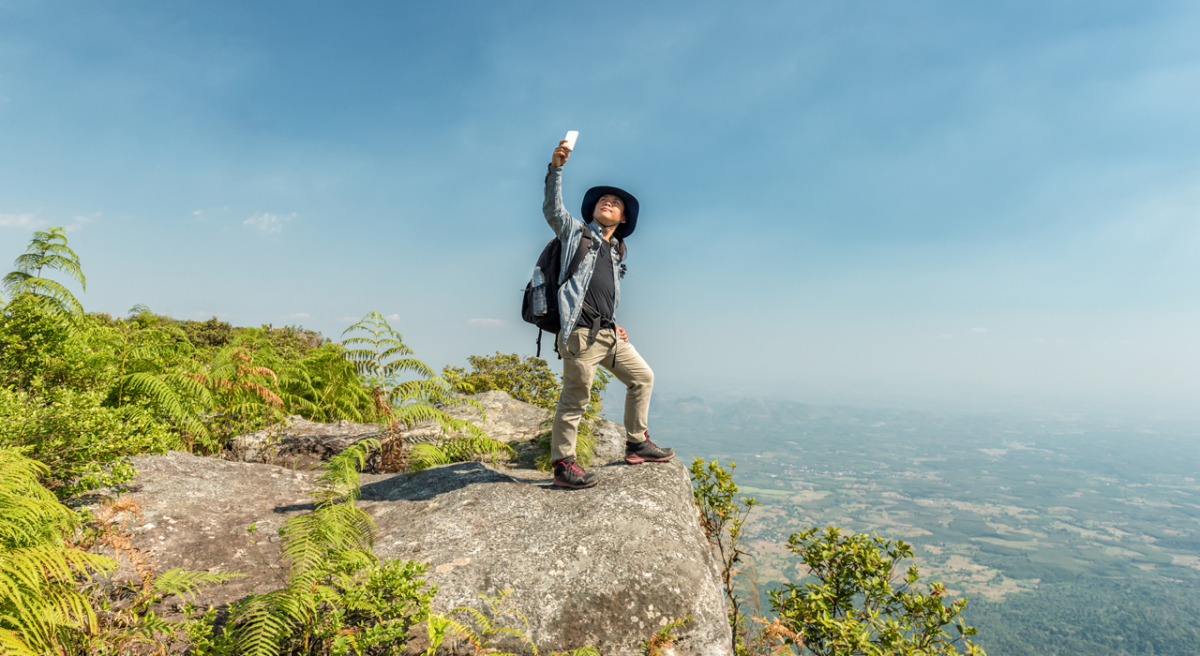
Guns Don’t Kill People…Selfies Do
If you spend any time on a social network such as Facebook, Twitter, or Instagram, you’re probably very familiar with the concept of a “selfie”; perhaps you’ve even taken a few yourself. While most selfies are straightforward and harmless – a casual, preening pose in front of the mirror or with a pet – others include extreme backdrops of steep ocean-side cliffs, snow-covered slopes, or even outer space. Unfortunately, sometimes the pursuit of the perfect selfie has resulted in death. In a recent essay in Critical Studies in Media Communication, Jessica Maddox of the University of Georgia explores how a small number of “killer selfie” media stories have led to an overarching and incorrect discourse about narcissism. In fact, she argues, exhibitionism is a more accurate critique of those taking selfies.
Inspired by a 2015 headline from Mashable, “More people have died from selfies than shark attacks this year,” Maddox analyzed 17 months of media coverage of selfie-related deaths from six newspapers to examine the “fallacious use of the Narcissus myth” and how it has contributed to the creation of a selfie hierarchy and a vicious cycle of selfie criticism.
More people have died from selfies than shark attacks this year
Defining the difference
Maddox first takes a deep dive into the definitions of narcissism and exhibitionism, distinguishing them in this way: Narcissism is based on the myth of a man who was so consumed by his own image that he wouldn’t share it with anyone and henceforth died by drowning after obsessively gazing at his reflection in a pond; but exhibitionism is based upon extravagant behavior that is intended to attract attention to oneself. The very nature of selfies, Maddox argues, is that they are intended to be shared with others, (primarily via digital channels), thus making “this ‘ism’ a more apt description of the actions occurring in selfie-related deaths.”
Selfie politics and hierarchies
Beyond observing that the media has constructed a vicious storytelling cycle that conflates selfies, selfie-related deaths, and narcissism, Maddox further explores how an “oversimplification of statistics contributes to how the media create a representational map of selfies by curating a moral panic.” A Forbes article broke down selfie statistics at its most basic level: In 2015, 30 billion selfies were taken on Android devices alone around the world, and yet only 12 selfie-related deaths were reported, putting the odds of dying while taking a selfie at about 1 in 4 billion. Given the low risk, the author notes that the panic of selfie-related deaths is significantly out of proportion to the perceived threat – and perhaps even more notable, that media reporting on selfie-related deaths presents them as events that “not only go against the natural order but also the social order. Selfies emerge not only as transgressions, but transgressions that kill.”
To further understand why selfies and, therefore, selfie-related deaths are forms of and outcomes of exhibitionism, Maddox delves into the concept of a selfie hierarchy, in which certain selfies are privileged over others (read: newsworthy). Because the media has constructed so-called “daredevil” or “extreme” selfies as more deviant than other selfies, any resulting deaths only add to the moral panic surrounding the issue. The result is that the practice of selfie-taking in general can be seen as “leading to the denigration of society.”

The author notes that not all media reports take this approach; some counter their peers’ reporting by reminding readers that the selfie itself isn’t what’s causing death – it’s actually an “underlying mechanism” or “intermediate mechanism” that precipitates an accident or death. Unfortunately, the majority of outlets inaccurately frame selfie deaths as an epidemic. Millions of people take selfies each year and don’t experience bodily harm or die. But the selfie hierarchy takes precedent in reporting: “Selfie and then death is more acceptable than simultaneous selfie-death,” according to Maddox. “A selfie’s politics seems to be determined by the process versus the final product.” Further, she notes, “Selfie politics show us that all may be a little ego-driven, but some are beautiful, some are tragic, some are superfluous, and some are exhibitionist. This never seems to be decided by the taker, but rather, in popular reaction.”
Maddox acknowledges that her argument raises more questions than answers, and will continue to do so as culture and media shift toward the post-analog and as the way we use media continues to evolve. She wonders if exhibitionism may eventually come to function as an accusation of ideological deviance in the way that narcissism has, and perhaps come to be known as a gendered phenomenon as well. “Because language does not merely describe reality, but creates it,” she writes, “the answers to these questions have the potential to become the zeitgeist.”


